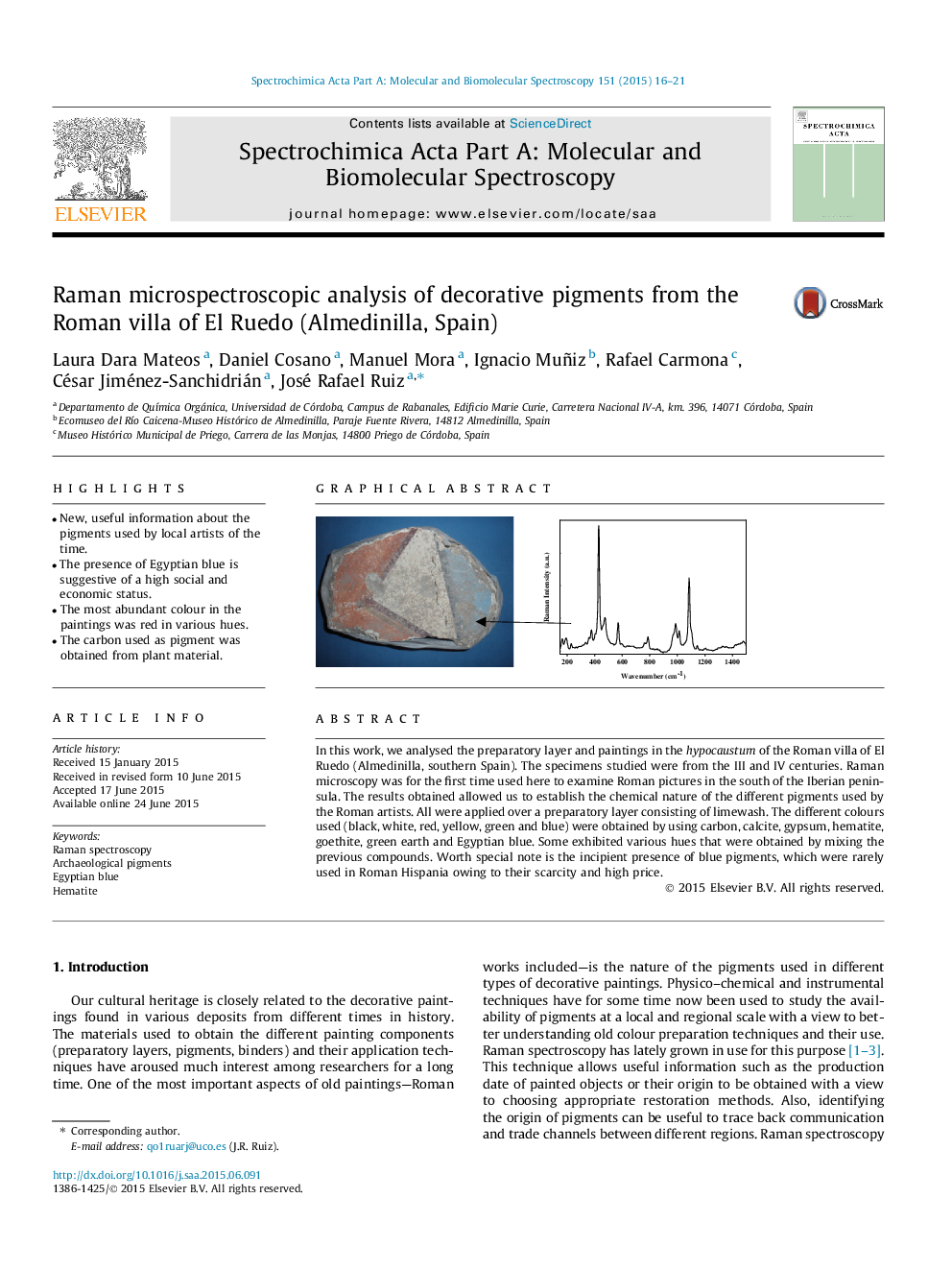| Article ID | Journal | Published Year | Pages | File Type |
|---|---|---|---|---|
| 1230047 | Spectrochimica Acta Part A: Molecular and Biomolecular Spectroscopy | 2015 | 6 Pages |
•New, useful information about the pigments used by local artists of the time.•The presence of Egyptian blue is suggestive of a high social and economic status.•The most abundant colour in the paintings was red in various hues.•The carbon used as pigment was obtained from plant material.
In this work, we analysed the preparatory layer and paintings in the hypocaustum of the Roman villa of El Ruedo (Almedinilla, southern Spain). The specimens studied were from the III and IV centuries. Raman microscopy was for the first time used here to examine Roman pictures in the south of the Iberian peninsula. The results obtained allowed us to establish the chemical nature of the different pigments used by the Roman artists. All were applied over a preparatory layer consisting of limewash. The different colours used (black, white, red, yellow, green and blue) were obtained by using carbon, calcite, gypsum, hematite, goethite, green earth and Egyptian blue. Some exhibited various hues that were obtained by mixing the previous compounds. Worth special note is the incipient presence of blue pigments, which were rarely used in Roman Hispania owing to their scarcity and high price.
Graphical abstractFigure optionsDownload full-size imageDownload as PowerPoint slide
